IN PICS: Why thousands of sheep take over Madrid for one day every year
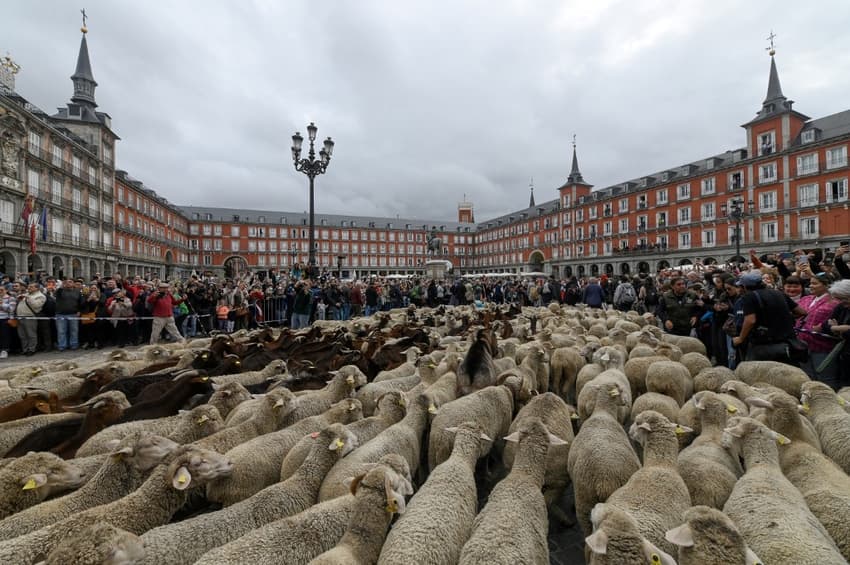
Tourists and residents lined the streets of Spain’s capital on Sunday to watch as a bleating, bell-clanking parade passed through Madrid’s most emblematic locations. But how did this bizarre tradition come about?
Every year since 1994, sheep farmers have paraded their livestock through Madrid along a route that once cut through undeveloped countryside on their way to winter grazing pastures in southern Spain.
It’s known as la Fiesta de la Trashumancia. Transhumance is a type of pastoralism which involves the seasonal movement of livestock between summer and winter pastures.
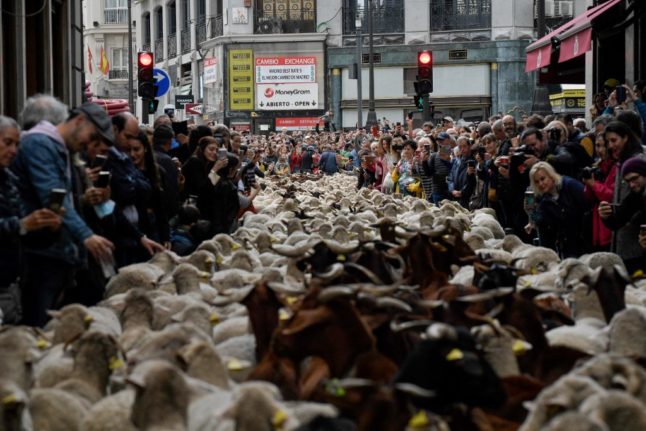
Since mediaeval times, Spanish shepherds have had the right to use herding paths crisscrossing a landscape that was once woodland and grazing space.
A law passed almost three decades ago looked to guarantee that Spain’s pastores could continue to use these ravines and natural paths as public domain for nomadic purposes.
La Fiesta de la Trashumancia acts as a reminder of this law and a chance to demand more financial help for rural Spain and the preservation of cattle trails, as growing urbanisation threatens herders’ ability to carry out the ancient practice.
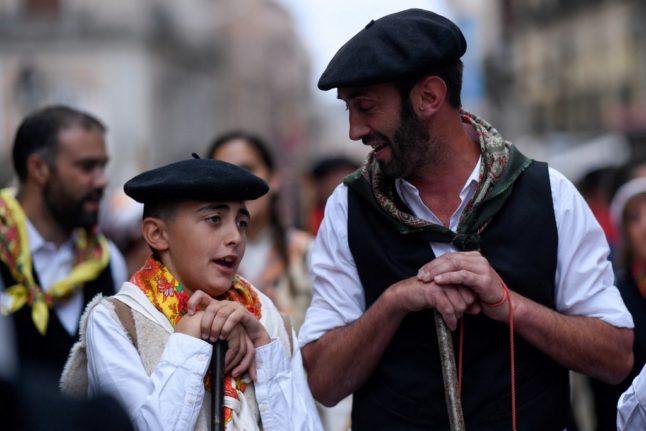
Transhumance not only acts as a means of providing work for rural populations, it also helps to reduce the risk of wildfires as livestock clear vegetation in an environmentally friendly way, as well as contributing to nature’s regeneration given that livestock carry seeds and spores in their hooves.
READ ALSO: Why Barcelona is recruiting sheep and goats to fight wildfires
2022’s edition was made up of 1,200 sheep and 200 goats, which on the morning of Sunday October 23rd brought traffic in central Madrid to a standstill, leaving tourists and residents to watch in awe as these unconventional day visitors took over the streets.

The parade always starts in the Casa de Campo, a former royal hunting ground that is now Madrid's largest park, then it usually makes its way through the Puerta del Sol — the main square — but construction work meant that this year el rebaño (the herd) went through Madrid’s equally emblematic Plaza Mayor, followed by other well-known squares such as Plaza de Jacinto Benavente, Plaza de Canalejas, Plaza de Cibeles and Plaza de Colón.
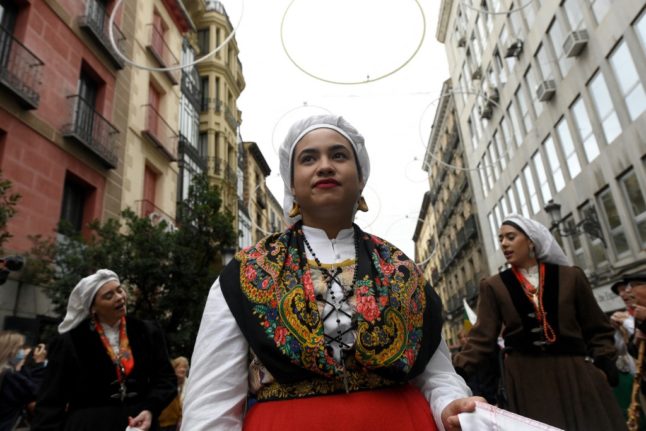
The herd was accompanied by musicians and dancers dressed in regional costumes that have been worn by rural workers for centuries.
The tradition then sees shepherds stop at Madrid’s city hall so that the chief herdsman can hand local authorities 50 “maravedies” — copper coins first minted in the 11th century — as payment for the crossing.
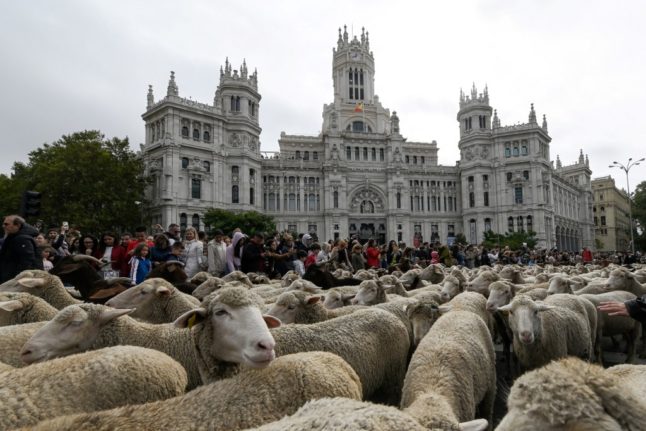
Farmers in Spain are struggling more than ever as a result of spiralling inflation caused by the war in Ukraine. The rise in energy and raw material costs has meant many are no longer making any form of profit and are in fact incurring losses, forcing them to sacrifice some of their livestock.
Comments
See Also
Every year since 1994, sheep farmers have paraded their livestock through Madrid along a route that once cut through undeveloped countryside on their way to winter grazing pastures in southern Spain.
It’s known as la Fiesta de la Trashumancia. Transhumance is a type of pastoralism which involves the seasonal movement of livestock between summer and winter pastures.

Since mediaeval times, Spanish shepherds have had the right to use herding paths crisscrossing a landscape that was once woodland and grazing space.
A law passed almost three decades ago looked to guarantee that Spain’s pastores could continue to use these ravines and natural paths as public domain for nomadic purposes.
La Fiesta de la Trashumancia acts as a reminder of this law and a chance to demand more financial help for rural Spain and the preservation of cattle trails, as growing urbanisation threatens herders’ ability to carry out the ancient practice.

Transhumance not only acts as a means of providing work for rural populations, it also helps to reduce the risk of wildfires as livestock clear vegetation in an environmentally friendly way, as well as contributing to nature’s regeneration given that livestock carry seeds and spores in their hooves.
READ ALSO: Why Barcelona is recruiting sheep and goats to fight wildfires
2022’s edition was made up of 1,200 sheep and 200 goats, which on the morning of Sunday October 23rd brought traffic in central Madrid to a standstill, leaving tourists and residents to watch in awe as these unconventional day visitors took over the streets.

The parade always starts in the Casa de Campo, a former royal hunting ground that is now Madrid's largest park, then it usually makes its way through the Puerta del Sol — the main square — but construction work meant that this year el rebaño (the herd) went through Madrid’s equally emblematic Plaza Mayor, followed by other well-known squares such as Plaza de Jacinto Benavente, Plaza de Canalejas, Plaza de Cibeles and Plaza de Colón.

The herd was accompanied by musicians and dancers dressed in regional costumes that have been worn by rural workers for centuries.
The tradition then sees shepherds stop at Madrid’s city hall so that the chief herdsman can hand local authorities 50 “maravedies” — copper coins first minted in the 11th century — as payment for the crossing.

Farmers in Spain are struggling more than ever as a result of spiralling inflation caused by the war in Ukraine. The rise in energy and raw material costs has meant many are no longer making any form of profit and are in fact incurring losses, forcing them to sacrifice some of their livestock.
Join the conversation in our comments section below. Share your own views and experience and if you have a question or suggestion for our journalists then email us at [email protected].
Please keep comments civil, constructive and on topic – and make sure to read our terms of use before getting involved.
Please log in here to leave a comment.